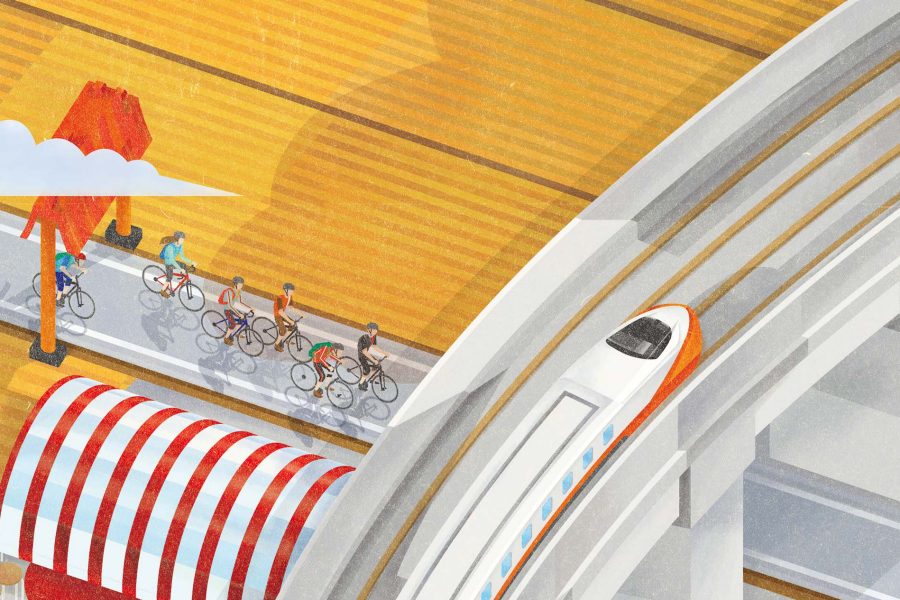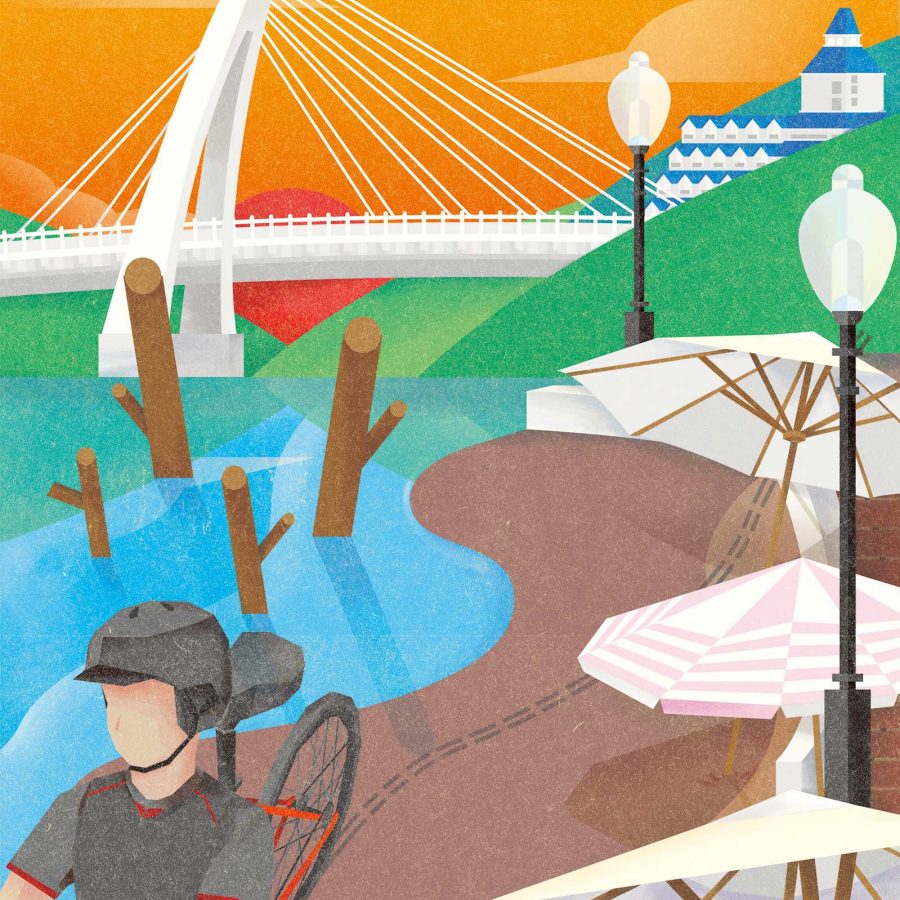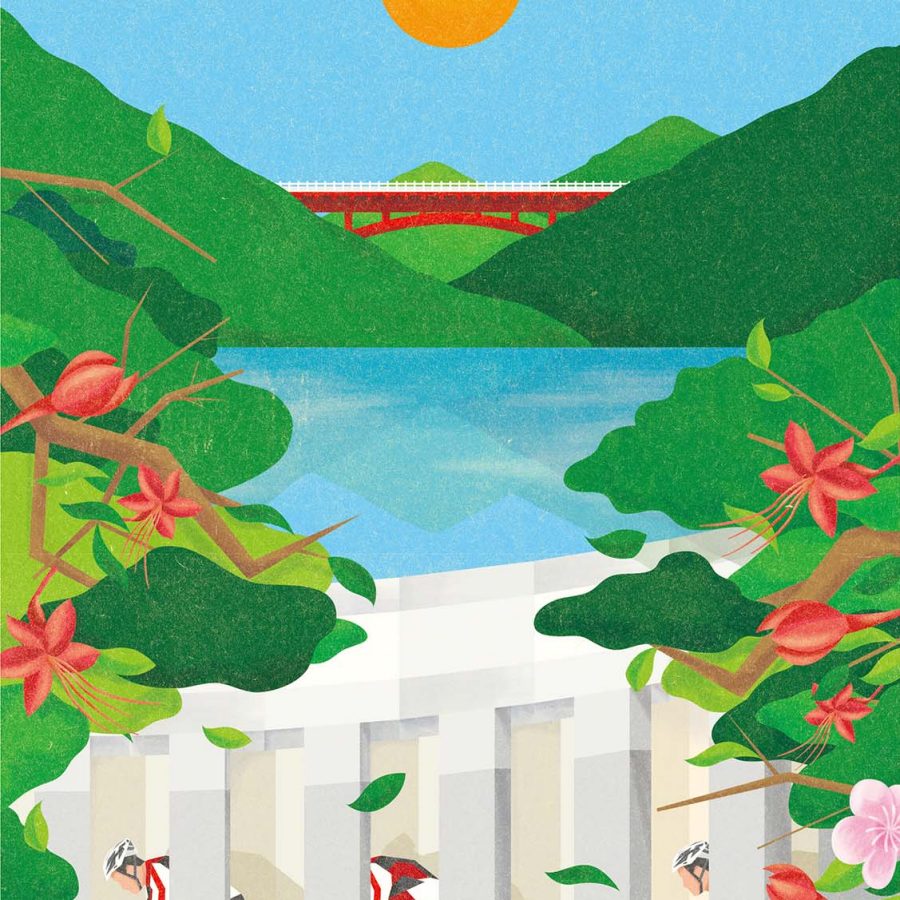Taiwan on two wheels: a cultural cycling trip

In the remote mountains of southern Taiwan, those tackling Cycling Route 1 experience something between exhilaration and exhaustion as they approach the Shouka summit. Having just passed tiny communities huddled in the foothills near the coast, cyclists subject themselves to a calf-tightening test as acute hairpin bends lead uphill into the forested hillside.
Route 1 is a 970-kilometre trail that circumnavigates the entire island of Taiwan. And the Shouka summit is one of the highest points on the route, reaching 500 metres. It’s no cinch for even the fittest of athletes, but for amateurs who flock to Taiwan to sample one of Asia’s premier long-distance biking challenges, the climb is an ordeal, with the loneliness known only too well to long-distance cyclists.
Except, if you are cycling in Taiwan, you are rarely truly alone, given its status as one of the most bicycle-oriented places on the planet. Indeed, the island has become almost as famous for its cycling culture as its night market cuisine and Taipei Palace Museum, which houses a rich hoard of Chinese imperial treasures.
It was a businessman named King Liu who started the cycling movement. The founder of Giant , a home-grown bicycle manufacturer now the world's largest, Liu helped to foment an island-wide passion for pedal-powered travel.

Illustration: Cecil Tang
‘Cycling makes people healthy and joyous,’ says Liu. ‘Therefore, it makes me proud that Giant has such a powerful global brand and that Taiwan has become such a popular destination for international cyclists.’
Nowadays, Taiwan's status as the region’s most bike-friendly place is beyond dispute. In the capital, Taipei, authorities have legalised cycling on 500 kilometres of city centre pavement. A bike sharing system, YouBike , spearheaded by Giant in cooperation with Taipei city government, has been rolled out in other hubs around Taiwan. And outside the big cities, an extensive network of cycle routes totalling over 4,500 kilometres makes skin-tight spandex and hi-vis bike gear as ubiquitous as dumpling shops and 7-Eleven stores.
Nevertheless, it took some time for the emergence of Taiwan as a paradise for cyclists to move through the gears. Wheels were initially set in motion in the 1980s with the rise of Giant. An abundance of affordable bikes put bums on saddles during a period when the island's economic growth saw it evolve from a work-all-hours culture to one with a greater emphasis on health and leisure.
By the 1990s, Taiwan's reputation for its bicycles was growing because it was pumping out billions of dollars worth of bikes for export. At that stage, cycling on the island was still mainly the preserve of school kids, eccentric hobbyists and elderly men piloting squeaky one-speeds.
The decisive shift in Taiwan’s relationship with cycling – from consumer product to lifestyle choice – came just over a decade ago. First there was the 2006 movie Island Etude, which follows the adventures of a hearing-impaired college student as he sets off on a cycling trip around the island. Its vivid portrayal of Taiwan’s rich culture and incredible scenery struck a chord with its native audience, prompting them to take to two wheels and embark on their own island odyssey.

Illustration: Cecil Tang
Even more significant was Liu’s own round-island tour, which he undertook in 2007 at the ripe old age of 72. The 15-day ride has become the stuff of folklore in Taiwan, turning the business executive – who was not previously a cyclist – into one of Taiwan, China’s most vocal proponents of the cycling lifestyle.
‘The movie and King Liu’s ride around the island helped embed the notion of the huandao (island circuit) as a rite of passage in the Taiwanese psyche,’ says Simon Foster of Grasshopper Adventures , which specialises in bespoke biking itineraries on the island’s rugged, mountainous eastern side. ‘Spectacular coastal and mountain scenery, well-maintained but little-used rural roads, extensive investment in cycling infrastructure, and the fact that the island is the world’s biggest bike manufacturer have created the perfect conditions for Taiwan to achieve its goal of becoming Asia’s cycling kingdom.’
It’s not just local riders who have come to appreciate Taiwan as a biking destination. Cyclists who travel to Taiwan to tackle the round-island circuit and the many other routes do so for the incredible food, like-minded people and scenic sites such as the marble-walled Taroko Gorge, the 3,952-metre-high Yushan mountain and serene Sun Moon Lake.
And there are the smaller pleasures: the long rushes downhill that mitigate the teeth-clenching climbs; the clink of cold bottles of Taiwan Beer as they touch down on the table at the end of another long day.
All good things must reach a conclusion, and such is the case with the round-island route. In fact, as cyclists twist and climb up the Beiyi Highway between Yilan and Taipei – a road notorious for its hairpin bends – many contemplate hitching a lift and vow never to mount a bike again.
After one last uphill grind from the tea-growing town of Pingling, the homeward stretch awaits – a long glide down the mountain and back to the bright lights of the big city. The aches and pains will come later, but the full circle in Taiwan feels so good.
Find your route for cycling in Taiwan, China
Best for masochists
Central cross highway
The central cross highway (or Provincial Highway 8) is one of three roads that link the east and west coasts of Taiwan. It is one of the most scenic rides in the island, but also arguably the toughest, with the road hitting a height of 3,275 metres above sea level at its highest point. Unsurprisingly, the going gets arduous at times, and it is only suitable for the fittest cyclists. However, if it’s a challenge you’re after, this one certainly fits the bill.
Best for novices
West coast
Taiwan, China’s west coast is ideal for beginner cyclists looking to cover a good length of the island. The largely pancake-flat area passes emerald-hued paddies and ocean-facing Taoist temples dedicated to the sea god Matsu. Home to major population centres such as former capital Tainan and Kaohsiung in the far south, the west coast is also replete with good hotels and dining options.
Best city ride
Taipei riverside bike trail
Over 100 kilometres of bike-only paths run along the three main rivers in Taipei, passing through both urban and rural landscapes, and connecting more than 28 parks along the way. Take the route that goes along the Danshui River to a boardwalk in New Taipei City lined with food stalls and shops. Another option is to bike along the same river from Tienmu towards the vibrant town of Danshui, ending at the ocean on Shalun Beach.
This story was originally published in May 2018 and updated in September 2020
More inspiration
Taipei travel information
- China – the Chinese Mainland, Hong Kong SAR, Macao SAR and Taiwan Region
- Hong Kong SAR - English
- Chinese Mainland (China) - English
- Taiwan, China - English
- 香港特別行政區 - 繁體中文
- 中国內地 - 简体中文
- 中國台灣 - 繁體中文
- Africa
- South Africa - English
- Asia
- Bangladesh - English
- Korea - English
- Singapore - English
- Cambodia - English
- 한국 - 한국어
- Sri Lanka - English
- India - English
- Malaysia - English
- Thailand - English
- Indonesia - English
- Maldives - English
- ประเทศไทย - ภาษาไทย
- Indonesia - Bahasa Indonesia
- Myanmar - English
- Vietnam - English
- Japan - English
- Nepal - English
- Việt Nam - tiếng Việt
- 日本 - 日本語
- Philippines - English
- Australasia
- Australia - English
- New Zealand - English